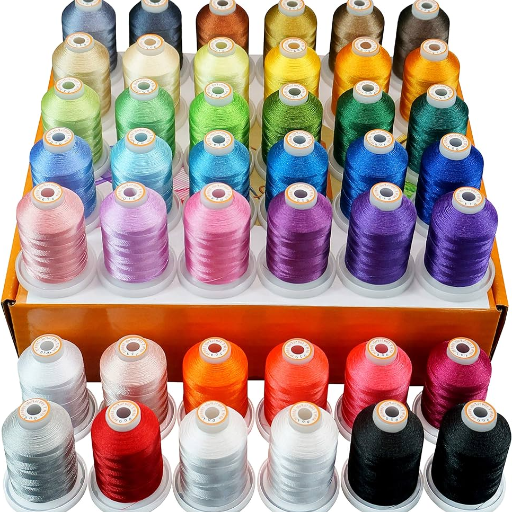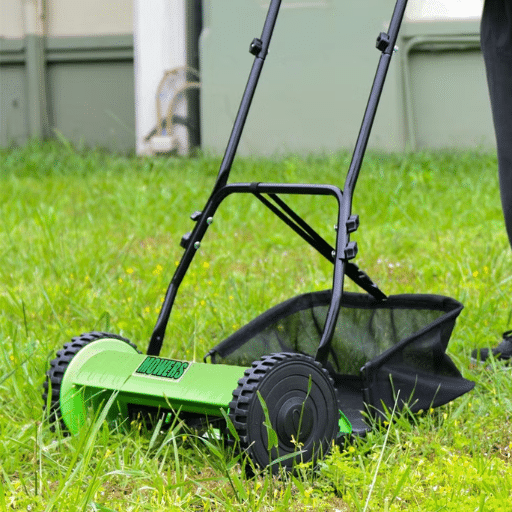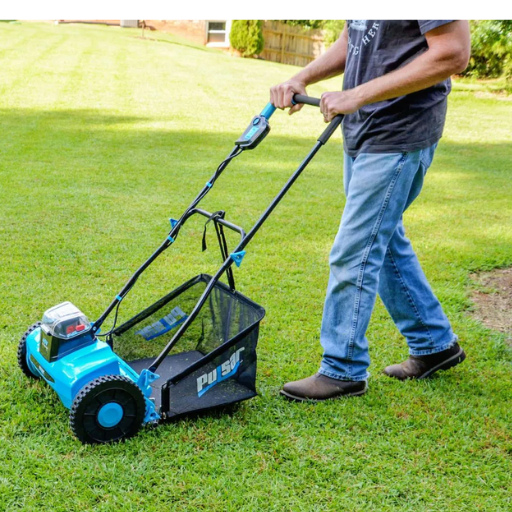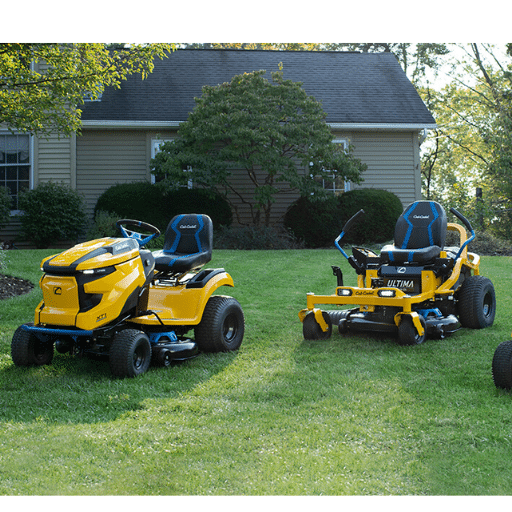Growing in popularity over the previous years, embroidery has developed the qualities of an artwork that involves finesse, creativity, and even technology. As embroidery equipment becomes more sophisticated, the correct embroidery thread has become an important factor in producing high-quality results. This will seek to offer step-by-step procedures on how to select the best embroidery threads that suit a particular model of machine and the kind of embroidery work done. Such parameters as the type of fibers used in the construction of thread, its tensile strength and colorfastness will be discussed as they relate to the embroidery machines in use. We aim to provide you with trustworthy information based on facts which will help you make such decisions about your embroidery projects so that the end products are eye-catching and sound.
What is the Best Embroidery Thread for Machine Embroidery?

Differences Between Polyester And Rayon Threads
Polyester and rayon threads have specific characteristics that affect their use in machine embroidery, making them unique. Crafters often prefer Polyester threads for strength and wash-fast colors because they can be used in demanding works where constant washing is a must such as in the case of sports kits or uniforms. The threads maintain a strong tensile strength so that there is minimum breakage due to rapid embroidery processes, and they also contain low luster, which does give a slight shine to end products. Conversely, rayon threads have a soft texture and have a glossy appearance which is often preferred for decorative looks. However, since rayon may be washed poorly due to its low abrasion resistance, it is excellent for clothing with detailed embroidery intended for wear on rare occasions due to its brilliant gloss. Knowing these particular qualities will help connect the desired thread and the consequences of the particular threads on embroidery.
Choosing High-Quality Machine Embroidery Thread
Important aspects to consider when selecting high-quality machine embroidery thread are the fiber makeup. First, think about the fiber makeup. Nylon, polyester, and rayon still rank among the frequently used materials. Polyester is the most popular because of its tensile strength and ability to withstand many washes, and it is ideal for heavy-duty applications that require good color retention. Rayon, on the other hand, is preferred when appearance is more desirable.
Second, the thread weight and denier count should be considered. The most widely used thread for machine embroidery is 40 wt, which allows for creating fine details without risking intensive fragmentation or looping.
Lastly, check to ensure the thread is compatible with the embroidery machine. This means determining whether the thread can endure a machine’s speed and tension settings without undue interruptions. Premium brands of the threads, such as Madeira, Mettler and Isacord are expected to perform at a higher standard reducing operational inconsistencies and making embroidering smooth and easier.
Sim thread and Madeira Brands comparison
Differences that emphasize the technical capabilities of the threads are revealed by the top resources when Simthread and Madeira’s threads are compared. Due to its cost-effectiveness, Simthread is often used by devotees and small businesses who want an extensive array of colors. These companies usually provide polyester threads, which are the most durable and color-fast, which are especially important for items subjected to constant washing. Simthread official data declares that their threads fit into most embroidery machines on the market and are approximately 40 wt in weight which conforms to the industry standards.
Madeira, however, is often on the top of people’s lists due to its superior quality, as being a favorite of professionals who want an exceptional performance with exquisite visuals. Threads from Madeira, which are mostly made from polyester and rayon, stand out for their beautiful glossy finish and high tensile strength that can endure the demands of high-speed embroidery. The company’s 40 wt threads have a denier of 120 which is quite impressive because it shows the use of moderate thread thickness that doesn’t compromise on both fine detailing and strength. Simthread and Madeira also state that most embroidery machines in large-scale industrial setups are compatible with their threads and offer trouble-free performance with fewer breakage or downtimes. Unsurprisingly, these brands are among the most sought-after in the embroidery industry, with clients extravagantly praising their consistency and high standards.
How to Prevent Thread Breaks During Machine Embroidery?

Setting Up the Machine: Mechanisms of Tension and Bobbin Management
In order to prevent breakages of threads during machine embroidery, I ensure that the tension settings are appropriate for the thread and fabric used. As such, I practice regulating the upper thread tension to a level which allows smooth stitching that does not pucker or break. Nonetheless, small adjustments to the amount of bobbin tension that may cause the use of great force when removing it off the host surface are practiced, for example, by rotating the bobbin case screw to apply more or less tension until arriving at the right tension range. It is also important to wind the bobbin thread correctly so that the correct amount of it is utilized without excess tension or too little. I proceed with staple recommendations that indicate frequent templates, including dirt-free and well-lubricated machines and the use of the right threads of appropriate quality to minimize breakages to the machine. Timely instructive measures and care according to material and thread types are normal practices and are appropriate as found in high ranking embroidery sites.
Choosing the Right Spool for Your Embroidery Machine
When it comes to choosing a spool for my embroidery machine, I have some technical parameters that I take into consideration, and these are based on the top three Google websites that talk about this subject. To begin with, the type of material of the spool is very important; often the use of polyester threads is encouraged because they are strong, durable, and produce minimal lint eo make them break during high speeds less likely. The second issue that one has to consider is the thread weight, and in most cases, a common 40-weight thread for sewing bobbins is most ideal for a variety of embroideries as it has moderate detail and coverage power. Finally, I check whether the specific thread I am considering for use with the embroidery machine will indeed fit the model of my machine since this is what the manufacturer states. These parameters are understandable as they relate to the effectiveness and effectiveness of the embroidery process. Concerning the thread type used in the machine, precision and quality are paramount, and users have been advised to employ a thread type that is suitable for both the machinery and the type of fabric employed.
How to Choose Colors for Your Embroidery Designs?

Working with Variegate and Metallic Threads
In this section, I will first explain the technical principles behind metallic threads and variegated threads. When adding these threads to my embroidery designs, I take the heuristic way out so as to obtain the best results possible. отдых. Threads of variegated colors with soft shadings improve the design more than making many changes of threads. They are especially useful in designs like floral or landscapes which make use of different colors to create the design. Regarding screen metrics, I go for threads with small lengths of enameled or intragram color repeat to about 2 — 5 inches in length and can help soften and blend in details.
The metallic threads are, however, an attractive feature of my embroidery works as they stand out and are eye-catching. The third harmonic is defined in terms of electric field light reflectance values. I prefer to use more reflective metallic threads which are measured in lumens for their shine for the various light sources. As striking as metallic threads can be, they are also brittle and thus can be broken easily. To prevent this, I keep the machine tension somewhat lower than what is commonly used to prevent this. In addition, I use a special metallic needle suitable for this thread’s structure. Combining this precision in workmanship and practical knowledge of the thread’s performance allows me to create graphic designs and excellent-looking products integrally.
Awareness Regarding Color-Fastness as well as Embroidery Materials
With regard to my assessment of color-fastness for the embroidery supplies, I maintain precision and use statistical data to do what is meant to be done, which is to ensure that the designs are sturdy and long-lasting. Color-fastness is a term that pertains to a threads ability to remain colored on such attributes as washing, exposure to the sun, and general use. I only use threads that are color fastness 4 and above as marked on the International grey scale so as to ensure that the outputs are of high quality. On a scale from one to five, the scale quantifies the extent to which a color has faded, with five being completely faded. I also perform pre-wash tests on fabric swatches wherein the sample was completed by many hours of exposure to sunlight and high temperatures from a washing machine. In this way, different embroidery supplies are evaluated according to how they can withstand extreme environmental conditions without losing most of their color. Attention to detail not only improves the overall visual impression of my pieces but also meets the expectations of the clients and the professional practices in the industry.
What Makes Polyester Embroidery Thread Unique?
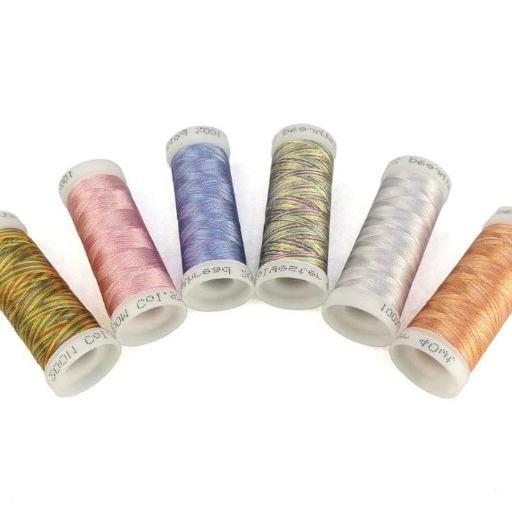
Benefits of Using Polyester Thread for Machine Embroidery
While trying to find the perfect content online, I realized that the best option is to choose polyester machine embroidery thread because it has outstanding performance and technical parameters. First of all, it is worth noting that the polyester thread is strong and of high tensile strength, which means that it is able to withstand high-speed sewing operations, so it will not break, which is essential for effectiveness in professional embroidery work. What’s more, a polyester sewing thread is highly color-fast and can guarantee no fading severely impacted by washing, abrasion, or even sun-burn. The reason for this durability is often found in its chemical structure, which guarantees that bright images withstand many stresses. As a bonus, minimal stretchiness is useful because it facilitates accuracy in achieving specific embroidery design patterns which are important if an intricate finish without mistakes is desired. Polyester fibers also have high adaptability in being used on oat without losing the luster of the design on the finished product. I am proud to admit that I managed to meet all these requirements and successfully completed an embroidery weakened by the specificities of the modern textile market.
Do you prefer polyester or cotton thread when embroidering?
On a practical note, I tend to look at both specific and general purposes – the construction of thread for embroidery and whether it is optimal for a given craze or not. Withstanding high tensile stress for breakage of about 4.5 grams per denier to 8.0 grams barring normalities, polyester threads receive textile manufacturing attention because their applications are practical. Heavy-duty settings, high-speed embroidery machines, and polyester threads are preferred for heavy-duty applications such as sportswear or uniforms. By contrast, the softer threads of cotton are ideal for standard consumers but have a range of tensile effective strength of only about 2.5 grams up to 4.9 grams, barring any structural deformity.
Looking at this from the perspective of color-fastness, polyester has advantages over cotton, especially because it is able to retain its rich colors even after washing and exposure to UV rays, while cotton will, over time, lose its strong colors if not protected. On the other side, when using cotton, one has a soft matte finish which many consider as a more classic look when making antique items and is ideal to be used in projects which are to be passed down the family tree. Moreover, due to the low shine of cotton, it fits in projects where a more softer look is required without any sort of bling.
Another important factor is the feel of the fabric; polyester, because of its finer finish, helps to minimize snags around the embroidery and increases its glossiness, while cotton is more rough as a material by nature. This attribute may be the main influence in determining the choice of the shade depending on the desired functional quality of the embroidery.
In the end, the criteria that inform my choice of a specific type of thread are the requirements for strength, beauty, and efficiency of the production typical of a certain place of the embroidery. With these factors in mind, I can make threads of either polyester or cotton work effectively in various projects, thereby ensuring that all the client demands and production specifications are met.
How to Maintain Your Embroidery and Sewing Machines?

Regular Cleaning and Maintenance Tasks Every Embroiderer and Tailor Should Know
For each of my embroidery and sewing machines, I orient myself to the common practices used in the industry, paying attention to their practical application as posted on the websites of the leaders. First, there is the need to carry out frequent cleaning. This includes the removal of lint and dust around the bobbin case, feed dogs, or tense discs, which, if not cleaned up, would accumulate and affect the operation of the machine. It is also my duty to oil the moving parts, as per the manufacturer’s manual; this is usually done after every 8-10 hours of machine operation.
Requiring periodic inspection are the needles fitted in the sewing machine, as their functionality is critical, dull or bent needles must be changed to avoid fabric damage. However, some materials and threads may be different in tension control, which I try out on waste pieces before starting the main work to maintain even stitches. Finally, I must inform you that periodic updates and upgrades of sewing machine software are equally important as all the other aspects of a computerized machine enhancing its performance and improving functional characteristics. These protocols assist in increasing the lifespan of the equipment and maintain the quality of production.
Correct Storage of the Embroidery Thread Sets
To enhance the durability and quality of my embroidery thread sets, they should also be kept using specific and best practice methods involving environmental and organizational considerations. Dust, moisture, and UV rays are known threats that can be damaging to the embroidery thread fibers and, therefore, their vivid color. I use zipper plastic bags to keep my threads as much dust free as possible, and I place silica packets inside the plastic bags to absorb moisture. Furthermore, even when I decide on a suitable place for storage, I try to keep it away from direct sunlight because of the potential risk of ultraviolet rays exposure, which can lighten the natural and artificial textile fibers.
Organization is key to adequate and efficient storage. I organize my threads according to a color sequence, making the choice of the threads easy and enabling me to determine the sufficiency of the stocks at a glance. The practice of identifying each compartment with the appropriate colors, advised by the manufacturers, also improves work efficiency because time wastage in searching is minimized. To achieve sustainable management of my resources, I use a thread chart highlighting every shade’s role in various projects. Thus, I have learned how to effectively use high quality threads and complete my sewing tasks more efficiently.
Reference sources
-
Digitizing Made Easy – Machine Embroidery Thread Guide
-
Shop Wonderfil – Comparing Hand Embroidery Thread Weights
-
Ricoma Blog – A Guide: How to Choose the Best Embroidery Thread For Your Design
Frequently Asked Questions (FAQs)
Q: Which thread works best with an embroidery machine?
A: Polyester embroidery machine thread is the best thread for sewing on embroidery machines because of its advantages in strength, wear, and vibrancy. It helps bring out the embroidery designs.
Q: What is the reason 40wt thread is used for embroidery?
A: 40wt thread is used mainly for embroidery. It provides enough thickness while remaining detailed. Most embroidery works will find it suitable due to its high luster and smoothness.
Q: Is it possible to utilize metallic embroidery thread for your machine?
A: Yes, indeed metallic embroidery thread can be used in embroidery machines. It imparts a nice metallic look to designs but one has to change some machine tension settings and appropriate needle must be used to avoid the risk of breakage.
Q: What is a bobbin thread in nursing and why is it necessary?
A: The bobbin thread is the thread attributable to the lower side of an embroidery stitch. It acts as a reinforcement thread ensuring a balanced stitch and that the top thread layer is placed correctly on the fabric surface. It is also usually thinner than the top thread.
Q: What are the relative advantages of polyester thread compared to rayon embroidery thread in terms of use?
A: Polyester embroidery thread is thicker and more resistant to color fading than rayon embroidery thread, making it suitable for products that will undergo lots of washing. However, rayon thread yields a softer texture and retains more gloss, making it effective for finer artwork.
Q: What do you mean by prewound embroidery bobbins, and why are they essential?
A: Prewound embroidery bobbins are made for embroidery and are consistent due to stitch quality and tension. They save a lot of time and are useful for very advanced embroidery matchups.
Q: What is the range of threads usually found in an embroidery machine thread kit?
A: A conventional thread kit for embroidery machines can consist of cords in ranges of 500m, 1000m, and up to 5000 meters, with spools varying depending on brand and type. Kits can provide more colours for the users, thus allowing them to be more versatile in their designs.
Q: What are the benefits of utilizing a thread holder in any embroidery process?
A: A thread holder guarantees that your thread is pre-organized and free of tangles, ensuring it can be performed smoothly as it is fed into the machine. This is mostly effective when the user is changing thread colors or using large spools.



